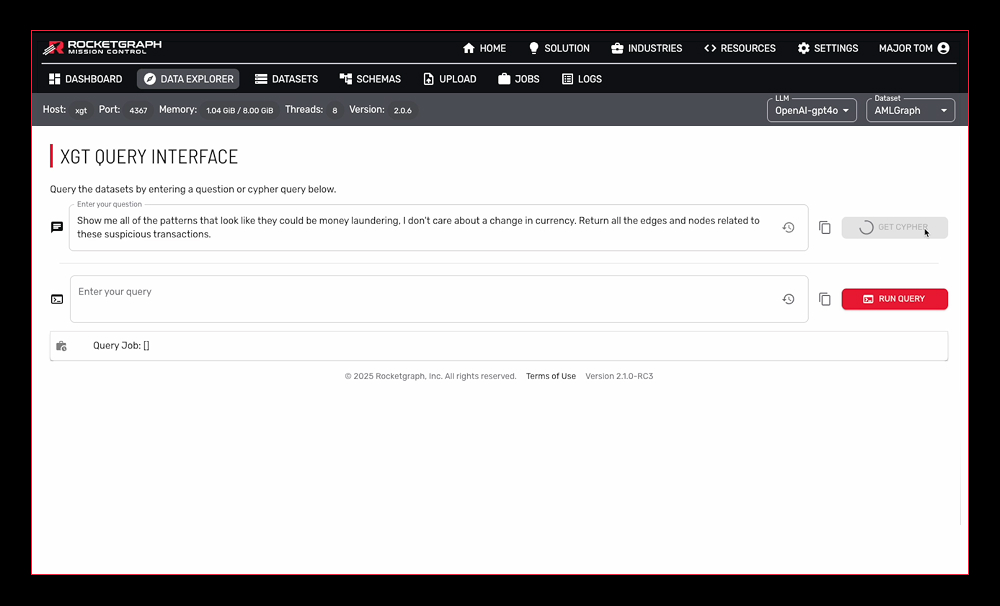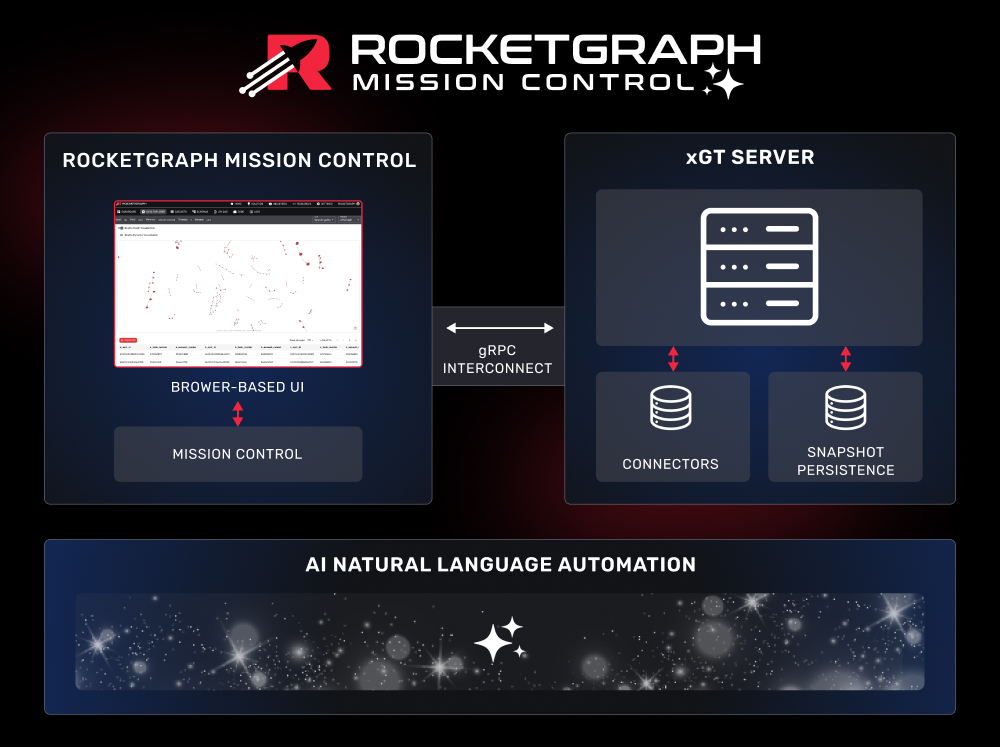
Rocketgraph: Making Graph Analytics as Easy as Asking a Question
 Rocketgraph, born out of a high-performance computing project at the U.S. Department of Defense, is rewriting the rules of graph analytics. By merging generative AI (GenAI) with supercomputing-grade performance, Rocketgraph enables analysts to ask sophisticated questions in plain English—and receive answers from the most complex, high-volume datasets in seconds.
Rocketgraph, born out of a high-performance computing project at the U.S. Department of Defense, is rewriting the rules of graph analytics. By merging generative AI (GenAI) with supercomputing-grade performance, Rocketgraph enables analysts to ask sophisticated questions in plain English—and receive answers from the most complex, high-volume datasets in seconds.
Why Now?
Organizations across government and industry face a new class of insight discovery problems. Whether it’s tracing the origins of financial fraud, navigating multi-year cyberattacks, or synthesizing diverse data for precision medicine, the common challenge is this: How do you make sense of it all, fast?
Graphs are uniquely suited to this problem. Unlike traditional databases that store data in tables, graph analytics uses nodes and edges to represent relationships—ideal for complex systems like communications networks, supply chains, or criminal networks. But historically, graph analytics has been the province of experts. Running a query often meant writing custom code in languages like Cypher or Gremlin, building a schema from scratch, and waiting days (or weeks) for results.
Two things have changed that. First, GenAI can now generate graph queries and build schemas automatically based on user prompts. Second, platforms like Rocketgraph use HPC principles—such as scale-up architecture and in-memory processing—to eliminate the performance bottlenecks that plagued legacy graph databases.

What Makes Rocketgraph Different?
Legacy graph tools scale by distributing data across nodes in a network. While fine for simple fraud checks, this “scale-out” architecture hits a wall when performing multi-hop queries across large datasets—like tracking a lateral movement attack that unfolds over months. Rocketgraph flips this model on its head.
Instead of scaling out, Rocketgraph scales up—keeping massive graphs in memory on a single node and using multithreaded parallelism to deliver results in real time. That means a security analyst looking for a T1550.002 pattern (a known method of credential misuse in the MITRE ATT&CK framework) can simply ask a natural-language question, and the system will return a full pattern match—including all nodes and edges—in seconds.
This isn’t theoretical. Rocketgraph is already powering use cases like:
- Detecting fraud across billions of financial transactions
- Monitoring adversarial actors on the dark web
- Forecasting supply chain disruptions before they happen
- Tracking genetic interactions in drug discovery pipelines
And because Rocketgraph supports pluggable GenAI, organizations can use their own LLMs to protect proprietary knowledge while enhancing analysis. The result: more accurate insights with greater operational security.
Lowering the Barrier to Entry
Rocketgraph isn’t just for PhDs in data science. Mission Control, the company’s natural language interface, lets any analyst engage with the graph without writing a line of code. Ask a question. Refine it. Visualize the result. Iterate. Analysts don’t need a “query guy” or a dedicated graph modeling team—they can interact with data directly.
This shift—from niche tooling to accessible intelligence—marks a turning point. As knowledge graphs become foundational to agentic AI workflows, organizations will need platforms that combine speed, scale, and simplicity.
The Bottom Line
Graph analytics no longer requires a rocket science budget—or a rocket scientist to run it. With Rocketgraph, organizations can finally analyze the most complicated datasets on earth with the ease of natural language and the speed of supercomputing. It’s not just a new way to do graph analytics—it’s a new way to think.
Want to see it in action?
Visit rocketgraph.com to schedule a demo, or download our paper here.




























